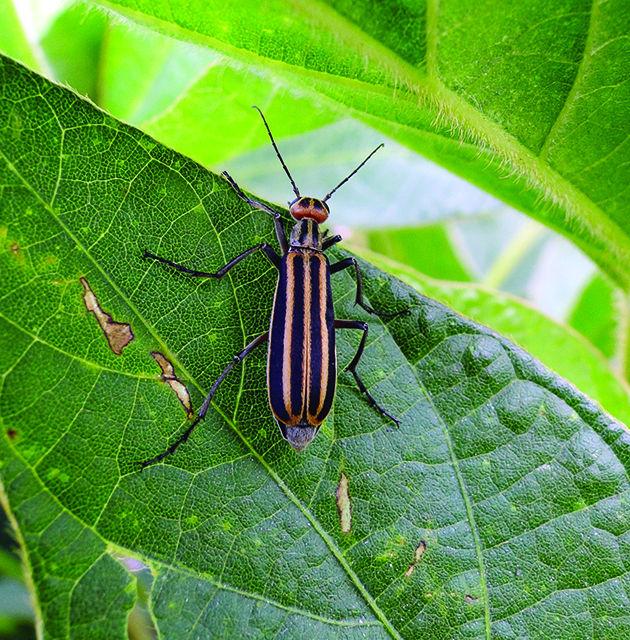Last month, the North Carolina Department of Agriculture suspected blister beetle poisoning caused the death of five horses in North Carolina. The poison, cantharidin, originates from the blister beetle and can contaminate alfalfa hay fed to horses.
Cantharidin, produced by the male blister beetle and transferred to the female during mating, is a chemical used for protection by the beetles. The toxin causes a painful blistering of human skin, and when consumed, the digestive tract. Clyde Sorenson, a professor in the Department of Entomology, said it is unclear how many beetles it takes to kill a horse because it depends on the concentration of cantharidin in the beetles. The striped beetle is thought to be the one that accumulates the most of the toxin.
“We think that cantharidin has a toxicity to horses of between 0.5 mg/kg and 1 mg/kg, so if your horse weighs roughly 1,000 pounds (roughly 500 or so kilograms), then you would think it would take 500 mg or half a gram of cantharidin to kill the horse,” Sorenson said.
According to Sorenson, if cantharidin has a toxicity of 0.5 mg/kg for horses, it would take about 50 beetles to kill a horse. However, it may be less than 0.5 mg/kg toxicity. There have been cases where officials have suspected only 10 to 15 beetles caused the indirect death of a horse by making it sick and leading it to contract another disease that killed it. If a pregnant mare consumes cantharidin-contaminated hay, she may miscarry her foal.
The N.C. Department of Agriculture stopped the sale of alfalfa hay that originated in Kansas due to a blister beetle outbreak last month. Still, dozens of species of blister beetles live in the Southeastern United States. The striped blister beetle is the species most associated with hay poisoning, though all blister beetle adults feed on the leaves of plants including alfalfa, soybeans and wildflowers. However, the larvae do not participate in the herbivore diet like their adult form.
“The blister beetle is associated with grasshoppers because the larvae feed on grasshopper eggs, so in places where there’s been an outbreak of grasshoppers, a lot of times shortly thereafter there’s a huge population bump in blister beetles,” Sorenson said.
Though the blister beetle is dangerous and can potentially kill a horse, there is a low probability of horses consuming the beetle or its toxin. According to Shannon Pratt-Phillips, an associate professor in the Department of Animal Science, alfalfa hay is the only horse food that blister beetles can be found in, but it is not the kind of hay most horses live off of.
“Alfalfa hay is quite high in protein, and so most horses don’t need that additional protein, but young growing horses and broodmares could use the extra protein, so it would be more commonly fed to those types of horses,” Pratt-Phillips said.
According to Sorenson, it is not unusual to find blister beetles in alfalfa hay, though there are things that make it more likely to have contaminated hay. If the area has recently experienced a grasshopper outbreak or it is later in the summer, there is a greater chance of the beetles being in the hay.
“Blister beetles tend to build up later in the summer, and alfalfa can be cut several times over the course of the growing season depending on where you live, and so the best hay for horses is usually the first cutting, as it is less likely to have blister beetles in it,” Sorenson said.
According to Pratt-Phillips, one of the biggest problems in contamination of alfalfa hay is the crimping of the hay when it is being harvested because the crimping can trap beetles inside the bales.
“Alfalfa in general is not going to be infected with blister beetles very commonly because the beetles will eat off the flowers of the plant, and if you cut the hay and allow it to dry, the beetles will leave,” Pratt-Phillips said. “But if you crimp it, it closes the ends, and so beetles can get stuck, and when the hay is processed they get ground up.”
Horses are recognized as the most susceptible animals to cantharidin poisoning, but ruminants, such as sheep, cattle and goats, can also be affected — though according to Sorenson, they are less vulnerable than horses because horses have a simpler digestive system.
To minimize the risk of alfalfa contamination, the N.C. Department of Agriculture emphasizes the importance of identifying blister beetles, knowing who the hay supplier is and if that hay supplier can identify the beetles.








